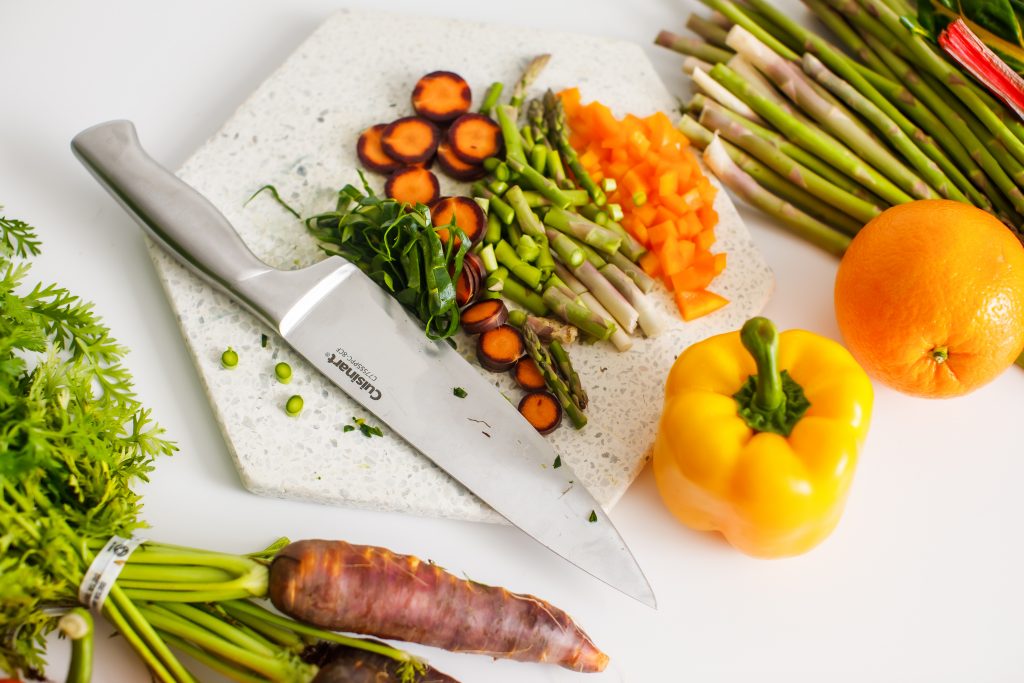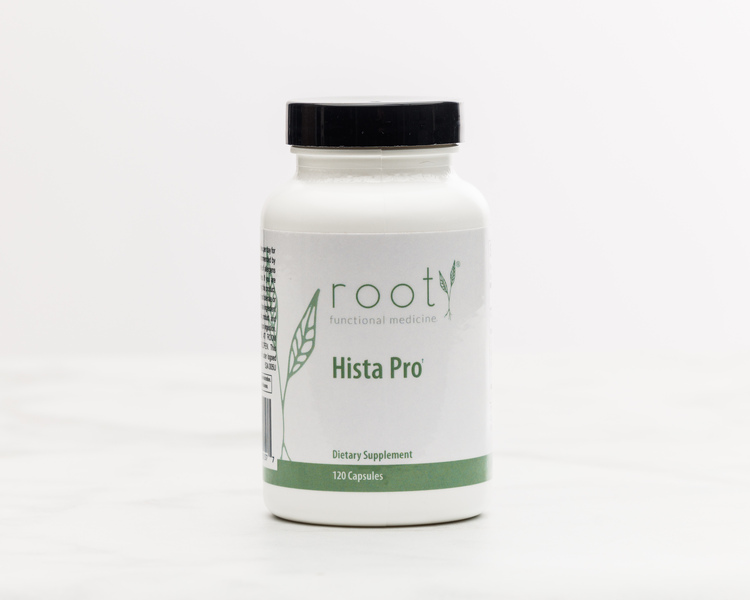
Anti-histamine Foods
Antihistamines are substances that treat allergy symptoms by blocking the effects of histamine in the body.
While fairly effective for seasonal allergies, these pills or capsules usually fail to address the root cause of these symptoms and may result in unwanted side effects. In this article, we’ll discuss anti-histamine foods, low-histamine diets, and finding the root cause of your symptoms.
What is Histamine?
Histamine is a chemical messenger produced by the body that is typically associated with allergy-type symptoms. However, histamines also have other jobs in the body related to digestion, blood pressure regulation, and hormone balance.
Typically, the body does a great job of effectively degrading histamine. However, some susceptible individuals may struggle with histamine breakdown due to high levels of pollen, leaky gut, genetics, hormones, or diet. DAO enzyme helps break down histamine in the gut. People who are deficient in DAO enzyme will be more prone to trouble breaking down histamine.
When the body is unable to effectively degrade histamine, you may experience symptoms of histamine intolerance. These symptoms vary widely and can cause typical allergy symptoms, fatigue, anxiety, and even menstrual cycle irregularities.
Anti-Histamine Foods
While no single food matches the antihistamine strength of over-the-counter drugs, there are some nutrients, antioxidants, and extracts that contain natural antihistamine properties.
Quercetin
Quercetin is an antioxidant found naturally in onions, broccoli, green or black tea, berries, and grapes. It is known to have anti-inflammatory benefits and may reduce histamine release (1).
Vitamin C
Vitamin C is a well-known nutrient that can strengthen the immune system and reduce inflammation. Vitamin C is also required to produce the necessary enzymes for histamine breakdown making it a crucial anti-histamine nutrient.
The foods containing the highest amounts of vitamin C include (2):
- Red bell pepper
- Oranges
- Kiwi
- Green bell pepper
- Broccoli
- Strawberries
- Brussels sprouts
- Grapefruit
Make sure you’re eating a diet rich in vitamin C for a healthier immune system and effective histamine breakdown.
Nettles Leaf Extract
Stinging nettles leaf is an herb that also has anti-inflammatory and antihistamine benefits (3). You can buy the dried leaves or flowers of stinging nettle and steep them into an herbal tea or add them to a bowl of soup.
Bromelain
Bromelain is the natural plant enzyme found in pineapple that is said to possess antihistamine properties. While pineapple is a nutrient-dense and delicious fruit, this anti-histamine food may be more effective for histamine intolerance when taken in higher amounts, as found in supplement form.
Hista Pro Supplement
Hista Pro is one of the most popular supplements for histamine intolerance and allergies because it contains all of these beneficial anti-histamine food ingredients and more!
Is summary, foods with anti-histamine properties include:
- Apples
- Onions
- Pineapple* (due to Bromelain)
- Parsley
- Blueberries
- Olive oil
*We are aware that Root takes a different stance on "histamine liberators" than other practices and lists online. We purposely do not give our members "histamine liberator" food lists because there isn't consistency in these or any good studies showing that happens with these foods. Histamine is released in the digestion process from foods that contain histamine, influenced by the microbiome, and by the immune system reacting to food sensitivities. It is important to find and address your root cause and have your diet personalized.
Low-Histamine Diet
While anti-histamine foods have properties that may reduce histamine release or promote proper breakdown, the most effective overall diet for histamine intolerance is a low-histamine diet. Many foods contain various levels of natural histamine. These levels tend to increase in leftovers, fermented foods, and certain alcoholic beverages.
The foods to avoid on a low-histamine diet include:
- Kombucha
- Sauerkraut
- Wine or beer
- Aged meats or cheese
- Olives
- Vinegar
- Canned meats/fish
- Tomatoes
- Ketchup
- Avocados
- Spinach
Besides the ones listed above, almost all fresh fruits, vegetables, meats, nuts, and seeds are safe to eat on a low-histamine diet plan. However, it’s best to eat leftovers within 24 hours or less as histamine content may increase the longer food sits. Cooking from home is also most effective as you can control which high-histamine ingredients to avoid in your recipes.
A low-histamine diet isn’t meant to be followed forever. Rather, it is meant to act as an elimination diet while you determine your own personal histamine threshold and work to address the root cause of your symptoms.
Finding the Root Cause
If you suspect that your symptoms may be triggered by histamine, you’ll want to investigate further to find the root cause.
Since there is not an overall test to diagnose histamine intolerance, it’s important to rule out other health conditions first, like autoimmune diseases or gut infections. Some of these conditions may be the underlying cause as higher levels of inflammation and leaky gut can impair your ability to breakdown histamine. A hormonal imbalance may also lead to histamine intolerance as estrogen is thought to activate histamine release from immune cells. As such, an estrogen imbalance may cause the body to release more histamine and lead to worsening symptoms.
Treating the root cause of your symptoms, especially if histamine related, may also include stress and lifestyle management, and eating an anti-inflammatory diet low in overall histamine content.
We help people find and treat the root cause of histamine intolerance in our functional medicine membership program.
We help people find and treat the root cause of histamine intolerance in our functional medicine membership program.

Get to the Root at Home
Curious about where you should start your functional medicine journey?
Take our Get to the Root Quiz so you can start working towards reversing disease and optimizing your health at the Root cause.
Take the Get to the Root Quiz
